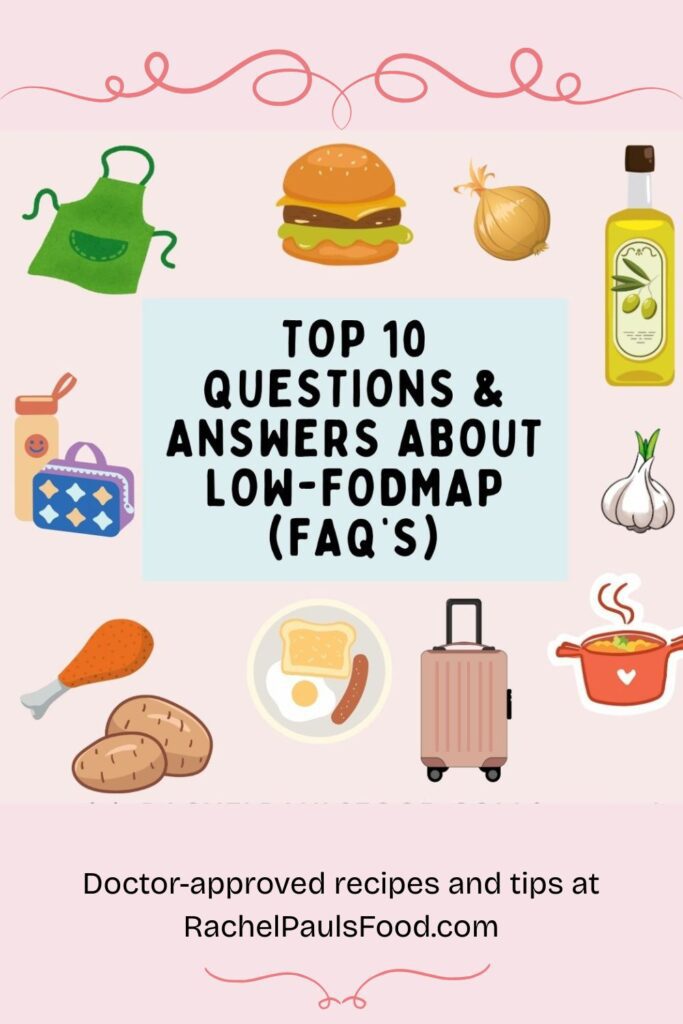
Curious about the low-FODMAP diet? Here are the answers. Ten low-FODMAP diet FAQs, in one place!
For those of you who are beginning the low-FODMAP diet, reintroducing foods during the challenge phase, or simply wondering how to improve their digestive issues, this blog has your answers.
I have the Why’s and the How-To’s you are looking for! Everything you are wondering about the low-FODMAP diet.
These are the TOP 10 FREQUENTLY ASKED QUESTIONS regarding the low-FODMAP diet. As a doctor, IBS-sufferer, and FODMAP expert, I wanted to provide you the most up-to-date, accurate responses.
Dr. Rachel’s Top 10 Questions & Answers (FAQ) About Low-FODMAP Diet
1. What is the low-FODMAP diet? Who is it for?
- When should I do low-FODMAP?
- Why would I start low-FODMAP?
- How successful is low-FODMAP?
The low-FODMAP diet is the most effective dietary treatment for Irritable Bowel Syndrome, or IBS. It has better success than medications, and other therapies.
The low-FODMAP diet was first described in the early 2000’s. At that time, a group of doctors and researchers (in Australia) recognized the harsh impact certain carbohydrates have on GI function. They designed the low-FODMAP diet, in order to guide intake of those noxious carbohydrates, and stabilize digestive symptoms.
The FODMAP carbohydrates span more than one type of food, and may occur in dairy, grains, herbs, fruits, vegetables, and food additives.
The exciting part was, the low-FODMAP diet worked very well! Numerous studies have supported its success over the past decades, with up to 86% of IBS patients feeling better on the low-FODMAP diet.
It has benefit in treating diarrhea, pain, gas, bloating, and constipation.
This is what FODMAP stands for:
F=Fermentable
O=Oligosaccharides (carbohydrates that contain chains of sugars, such as onion, inulin, and beans)
D=Disaccharides (carbohydrates that contain two sugars, such as lactose)
M=Monosaccharies (carbohydrates with a single sugar group, such as fructose in apples and honey)
A=And
P=Polyalcohols (types of carbohydrates that include sorbitol, maltitol, xylitol)
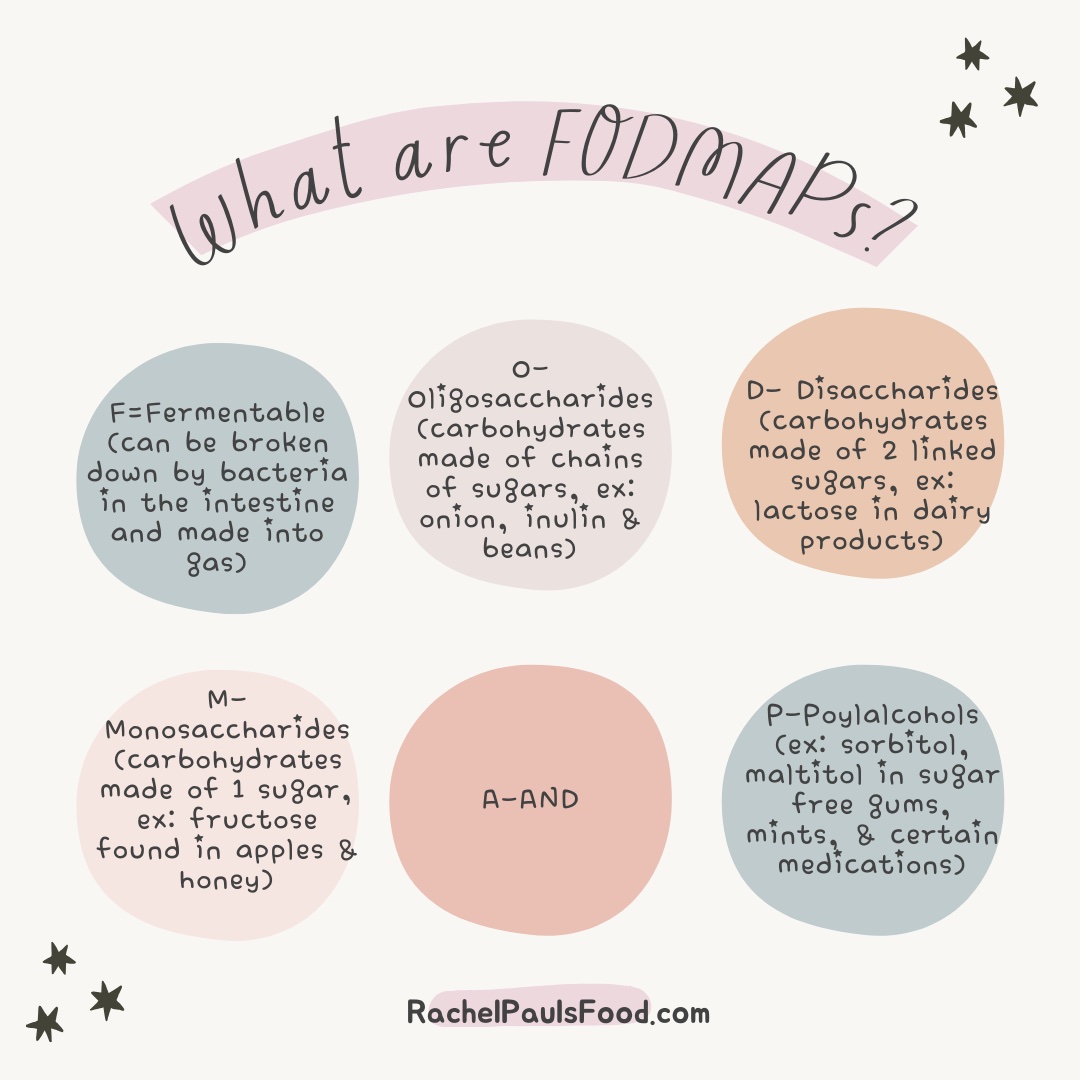
Some foods have high levels of the poorly digestible FODMAPs and are a ‘high-FODMAP food’, and some have low, or no FODMAPs, thus are a ‘low-FODMAP food’.
By reducing and avoiding the high-FODMAP foods, you can limit the symptoms associated with them.
2. What foods are very low FODMAP?
- What can I eat on low-FODMAP?
Carbohydrates are in many, but not all foods. Some foods have no carbohydrates (like meat, chicken, pork, fish, eggs, and oil), while others have differing levels of FODMAPs.
Since the science surrounding FODMAPs is constantly evolving, FODMAP information is updated regularly. Therefore, many ‘food lists’ (printed, and online) are out-of-date. I highly suggest purchasing a food app to guide you. There are two reliable food apps: Monash University and FODMAP Friendly.
Be reassured that there are many foods that are so low in FODMAPs, you may enjoy them in large amounts.
Some examples are:
- Protein: Beef, Chicken, Pork, Fish, Shellfish, Eggs, Cheese
- Starches: Oats, Rice, Quinoa, Potatoes
- Vegetables: Lettuce, Spinach, Carrots, Parsnips, Radish
- Fruit: Kiwi, Blueberries, Pineapple
I have a whole blog post dedicated to these: Low-FODMAP Foods You May Have in Large Portions: What can you eat on the low-FODMAP diet?
Easy meal options include grilled chicken, steak, or salmon with rice; tossed salad with egg, cheese, and oil/vinegar dressing; scrambled eggs with potatoes; or roasted turkey on gluten-free bread.
3. What can’t I eat on low-FODMAP?
- What is not allowed on low-FODMAP?
The FODMAP diet omits types of carbohydrates that are difficult to digest and are fermented by the intestine. No food is considered ‘forbidden’, but all high-FODMAP foods have an associated ‘portion limit’. That means they may trigger symptoms depending on the amount consumed. For some foods, that portion could be larger than others.
Some very high FODMAP foods include onion, garlic, asparagus, barley, beans, cow’s milk, dates, honey, and inulin.
4. How long should I stay on low-FODMAP?
- Is low-FODMAP forever?
The low-FODMAP diet is not a long term program. It is a process that has THREE PHASES.
It is meant to be a continuum, to provide you with the information you need to succeed in the future.
The phases are:
During the first phase, you will eliminate all high-FODMAP foods and beverages, to calm your gut, and balance your system. That is the first step. It is known as the ‘elimination phase’.
During the elimination phase it will be important to follow the low-FODMAP diet exclusively, in order to ensure your success. This may be for as short as 2 weeks, or many months, depending on your goals.
After the elimination phase, you may be ready to try reintroducing foods, one at a time. This is the second phase of the diet, known as reintroduction. Reintroduction is also a detailed process and will identify which foods are triggers for you.
Once you have finished reintroduction, you will then move into the final and third phase: integration and personalization. From then on, you will be following a ’personalized’ or ‘modified’ low-FODMAP diet.
Each person is different. Some will go back to eating virtually all foods. Others will maintain restrictions.
That is up to your body and your thresholds.
5. What are good breakfast choices on low-FODMAP?
Many breakfast foods are low FODMAP! These include, eggs, bacon, toast, oatmeal, millet, quinoa, rice, potatoes, lactose-free plain yogurt and lactose-free cottage cheese, certain gluten-free breads, and several rice/oat based cereals.
I have a full list of breakfast recipes here: Dr. Rachel’s Best Low-FODMAP Breakfast Recipes; Gluten-free.
6. What are good lunch choices on low-FODMAP?
Lunch does not have to be stressful on low-FODMAP. There are many low-FODMAP lunch options you can enjoy.
I suggest sandwiches on gluten-free bread using chicken, tuna, egg, cheese, peanut butter, or turkey. You can also enjoy a tossed salad with nuts or seeds and oil/vinegar dressing. Try grilled meat/fish with rice or potatoes. Or cook up a low-FODMAP soup recipe from my blog.
See more about lunches here: Low-FODMAP School Packed Lunches Made Easy; Dr. Rachel’s Packing List of Low-FODMAP Foods On-the-Go
7. How can I enjoy food without onion and garlic?
- Can I have onion on low-FODMAP?
- Can I have garlic on low-FODMAP?
- What are substitutes for onion and garlic on low-FODMAP?
Both onion and garlic are high-FODMAP foods. Only small amounts are allowed during the elimination phase.
Nevertheless, it is very possible to add flavor of onion or garlic without the FODMAP triggers, and make your recipe taste exactly like you remember.
Some ways to substitute the flavor of onion and garlic include onion and garlic-infused oils, the stalk of scallions and leeks, garlic shoots (scapes), chive powder, or asaoefetida (Asian spice).
Read more about both topics with these links:
Dr. Rachel’s Low-FODMAP Onion Substitutes: What can you use instead of onion on low FODMAP?
Dr. Rachel’s Low-FODMAP Garlic Substitutes; What can you use instead of garlic on low FODMAP?
8. Can I eat out on low-FODMAP?
- Can I eat in restaurants on low-FODMAP?
- Will FODMAP limit my social life?
One of the challenges of low-FODMAP includes feeling you have few choices at a restaurant. However, there are ways to still have an active social life without deprivation.
Ask for grilled beef, chicken, or fish without added onion or garlic. Select roasted or baked potatoes, unseasoned rice, a salad with oil/vinegar dressing, sourdough bread with butter, broccoli and carrots, and share a flourless chocolate cake. Sushi is also an easy choice to keep low-FODMAP.
You may also benefit from occasional use of digestive enzymes. There are products available to assist with lactose, fructose, and fructan digestion.
I have some blog posts dedicated to eating out that you may find helpful:
- Dr. Rachel’s Low-FODMAP Fast-Food Options (Because Low Doesn’t Have to Mean No)
- Low-FODMAP Options at Starbucks: Coffee, Bakery and More!
- Dr. Rachel’s Low-FODMAP Menu Options at Chipotle and Taco Bell; Because Low Doesn’t Have to Mean No
9. What are dinner choices on low-FODMAP?
- What are easy meals for my family on low-FODMAP?
Dinner is my favorite low-FODMAP meal. I have created so many recipe options that I never feel deprived (like my low-FODMAP 30-minute collection).
Easy options include beef, chicken, turkey, or fish that is roasted or grilled (avoid onion and garlic), roasted or mashed potatoes, steamed rice or quinoa, scrambled eggs or omelet, gluten-free pasta with ‘sensitive’ marinara, grilled cheese on gluten-free bread, and so many more.
Check out Dr. Rachel’s Low-FODMAP Grocery Shopping List; IBS-friendly, Gluten-free and my Dr. Rachel’s Recipe Substitutions for the Low-FODMAP Diet (a.k.a ‘Pantry-Swaps’) to help you modify some of your usual favorites.
10. How can I travel while on low-FODMAP?
- Can I follow low-FODMAP in other cities? Other countries?
I can’t argue, traveling may involve a little advance preparation. Especially if you are unsure of the cuisine where you are going.
To keep my tummy in check, I pack a few essentials.
Low-FODMAP airport snacks include peanuts, popcorn, french fries, fruit cup (low-FODMAP selections), cheese sticks, and potato chips.
I also carry digestive enzymes, and select gentle menu options such as grilled protein (chicken, tofu, turkey, salmon), eggs, steamed rice, rice noodles, sourdough bread, cheese, potatoes, and tossed salads.
One of the reasons I was inspired to write my 2 books, was to guide people through the low-FODMAP diet, from elimination to personalization. Click this link to see them on Amazon!
Here are 10 of my favorite low-FODMAP Tips, that No One ever Tells You:
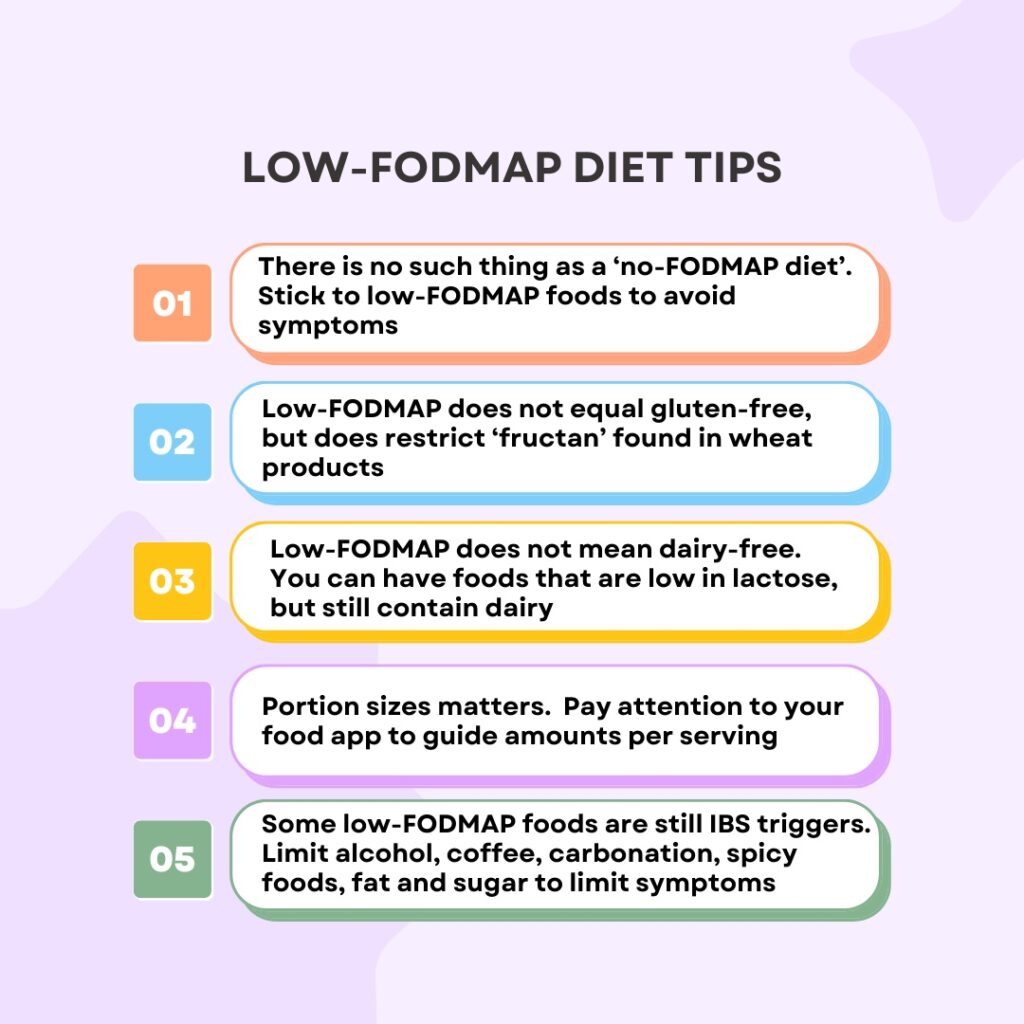
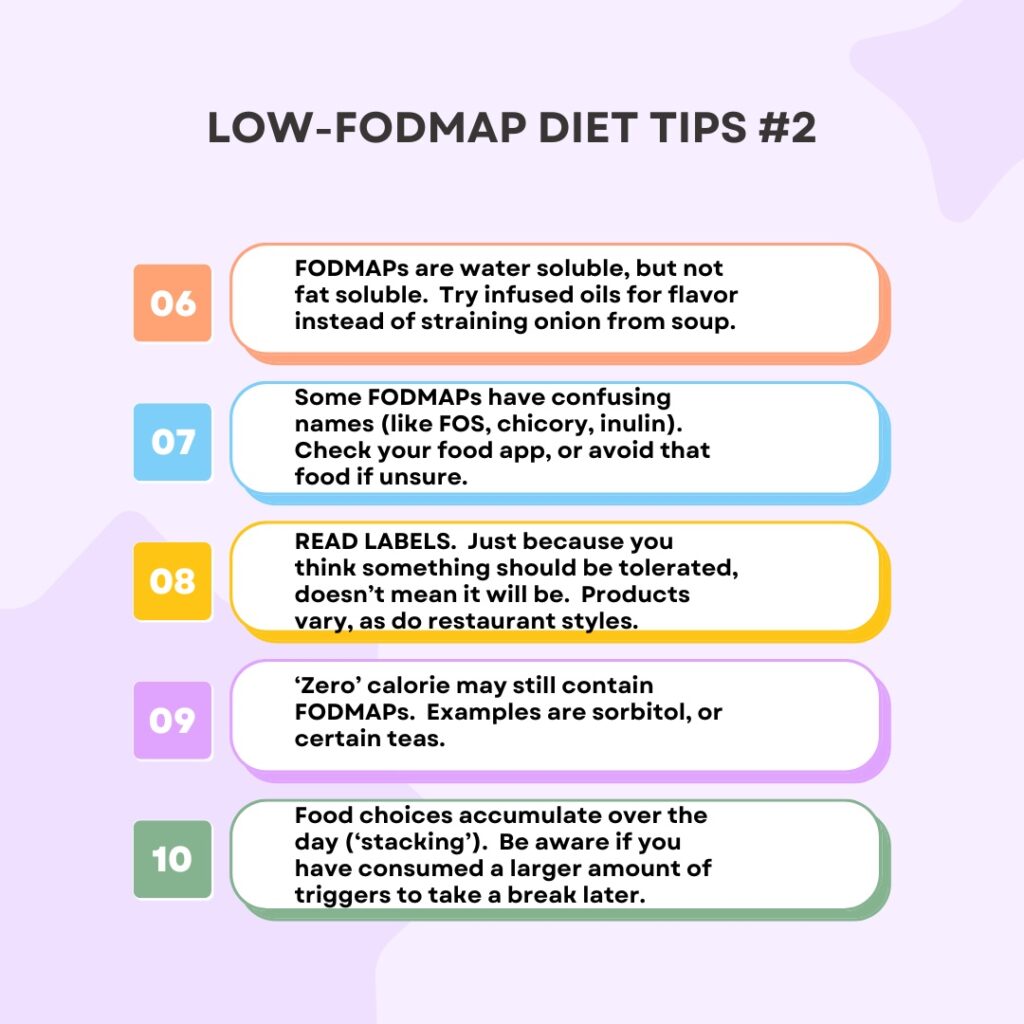
You may also enjoy:
- Dr. Rachel’s Low-FODMAP Onion Substitutes
- Dr. Rachel’s Recipe Ingredient Switches, Swaps & Substitutions for the Low-FODMAP Diet
- Dr. Rachel’s FODMAP Facts: LOW-FODMAP MILK OPTIONS
- Dr. Rachel’s FODMAP Facts: Are Bananas Low-FODMAP?
- Dr. Rachel’s Low-FODMAP Garlic Substitutes
- Dr. Rachel’s Low-FODMAP Diet 5-Day Meal Plan; Recipes and More (IBS-friendly!)
- Dr. Rachel’s Guide to Starting the Low-FODMAP Diet
Or over 600 more low-FODMAP & gluten-free recipes. IBS-friendly.
Be healthy and happy,
Rachel Pauls, MD
This article is based on the available FODMAP data at time of posting




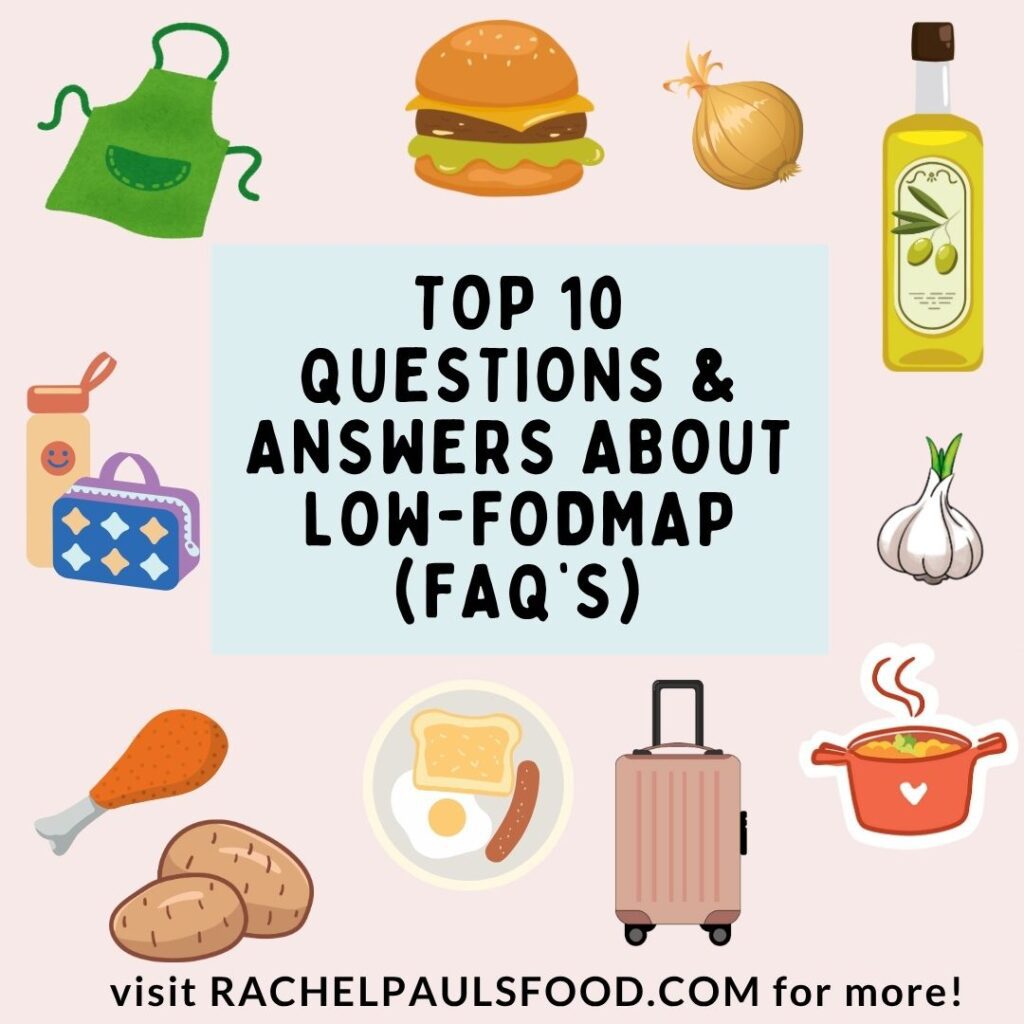
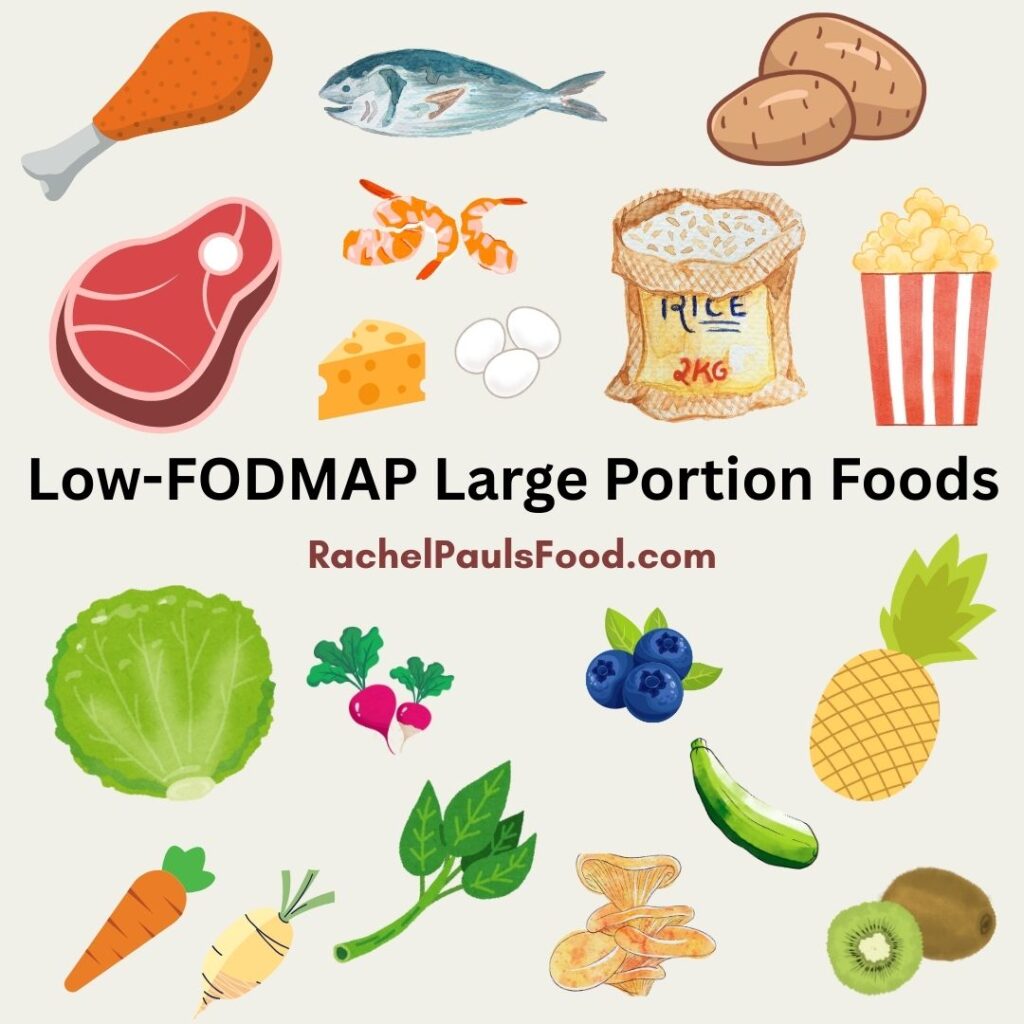
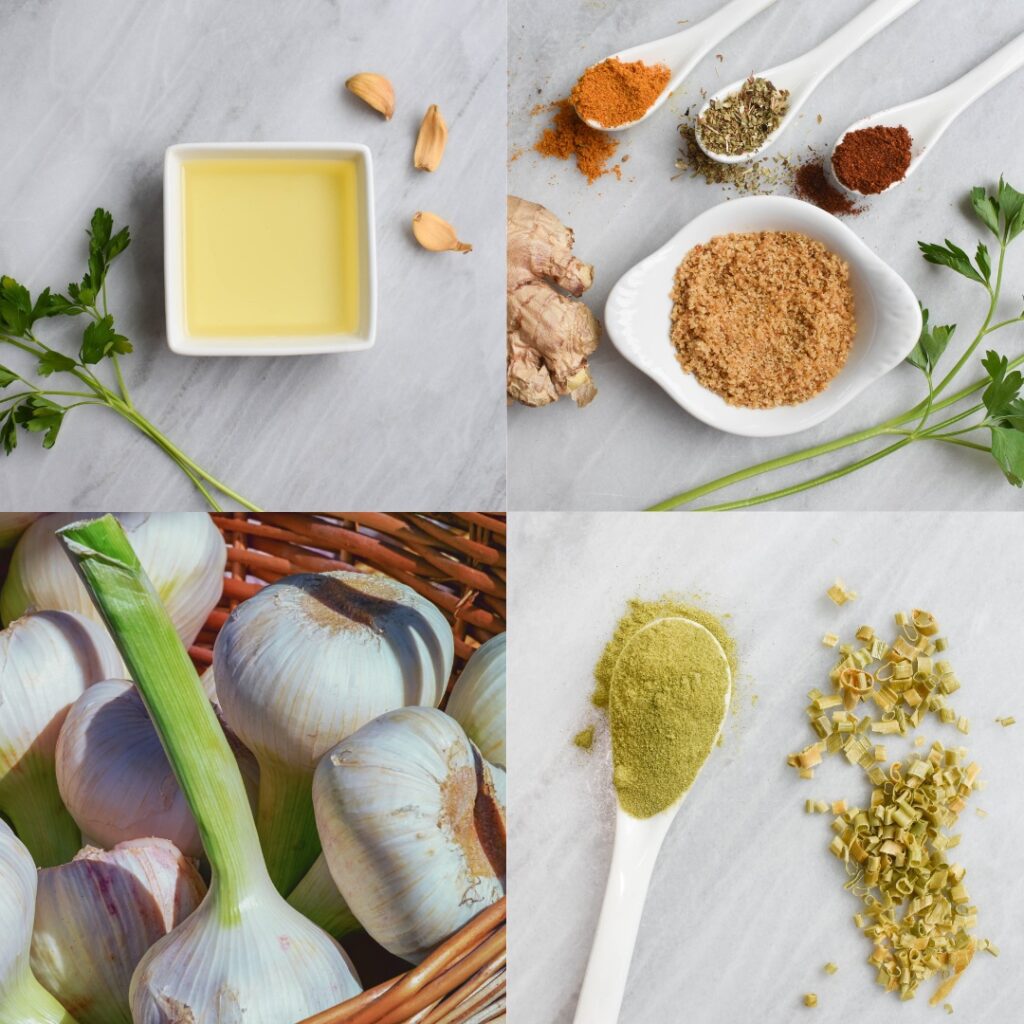
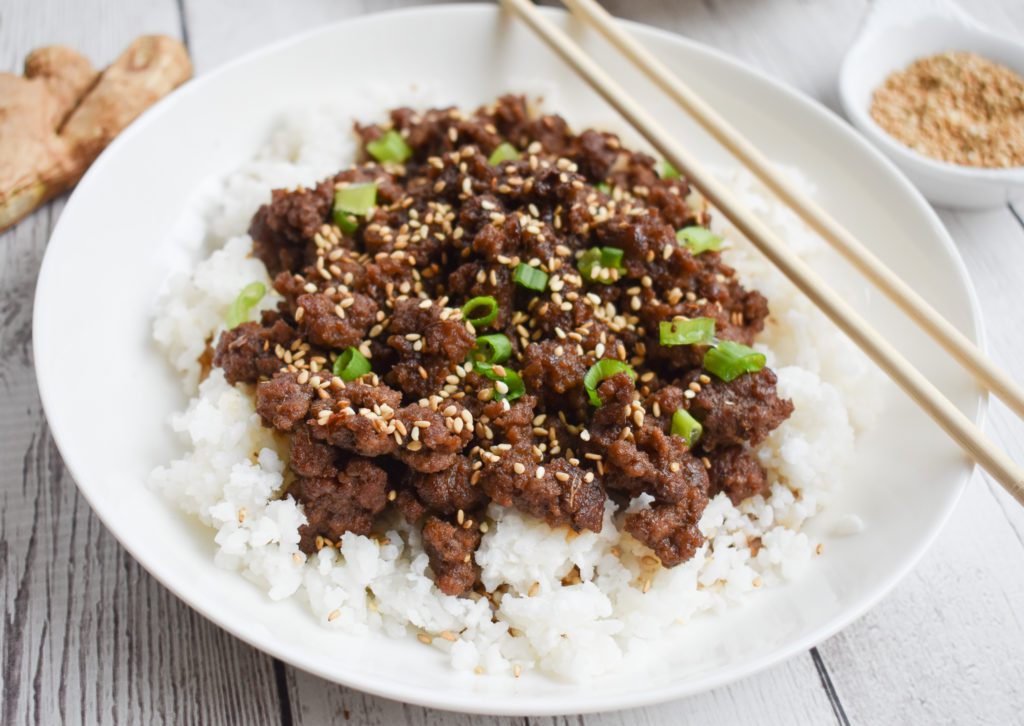

2 Responses
Thanks
The blog posts you have had these last few months have just been wonderful Dr. Rachel! I feel so grateful, thank you so much for all your work making life easier to live with IBS, your wonderful website has given me all the information I needed to become almost symptom-free since I discovered it!
Dear Grateful reader,
I am so touched by your comment. People like you are what inspire me to post blogs and recipes, since I understand how confusing the low-FODMAP can seem.
I hope to hear from you again, and you have a wonderful day.
Best,
Rachel